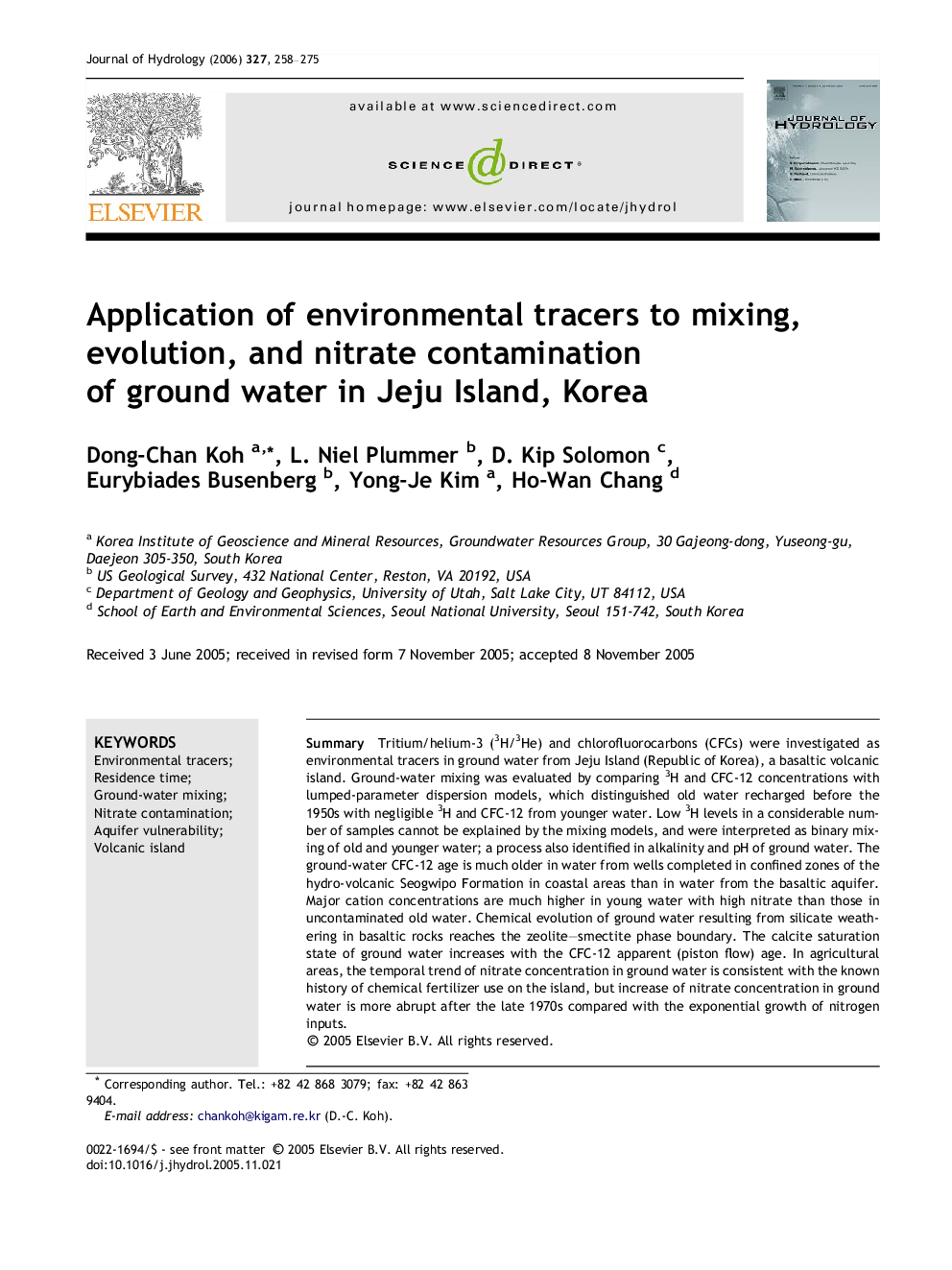| Article ID | Journal | Published Year | Pages | File Type |
|---|---|---|---|---|
| 4580803 | Journal of Hydrology | 2006 | 18 Pages |
SummaryTritium/helium-3 (3H/3He) and chlorofluorocarbons (CFCs) were investigated as environmental tracers in ground water from Jeju Island (Republic of Korea), a basaltic volcanic island. Ground-water mixing was evaluated by comparing 3H and CFC-12 concentrations with lumped-parameter dispersion models, which distinguished old water recharged before the 1950s with negligible 3H and CFC-12 from younger water. Low 3H levels in a considerable number of samples cannot be explained by the mixing models, and were interpreted as binary mixing of old and younger water; a process also identified in alkalinity and pH of ground water. The ground-water CFC-12 age is much older in water from wells completed in confined zones of the hydro-volcanic Seogwipo Formation in coastal areas than in water from the basaltic aquifer. Major cation concentrations are much higher in young water with high nitrate than those in uncontaminated old water. Chemical evolution of ground water resulting from silicate weathering in basaltic rocks reaches the zeolite–smectite phase boundary. The calcite saturation state of ground water increases with the CFC-12 apparent (piston flow) age. In agricultural areas, the temporal trend of nitrate concentration in ground water is consistent with the known history of chemical fertilizer use on the island, but increase of nitrate concentration in ground water is more abrupt after the late 1970s compared with the exponential growth of nitrogen inputs.
